Basement Repair
The basement, often an overlooked space in homes, plays a vital role in the house’s structural integrity and overall health. basement repair is needed because basements can experience issues ranging from cracks in the foundation to water damage over time.
Basement Repair
- Settlement occurs when the soil beneath the foundation compresses, causing the structure to sink. This can lead to uneven floors, cracks, and other structural problems. Identifying and addressing settling foundations is crucial to preventing further damage to your home.
- Over time, the lateral pressure from the surrounding soil can cause basement walls to bow or lean. This can result in cracks, instability, and the risk of collapse if not promptly addressed. Bowed walls often indicate structural issues that require professional attention and repair.
- Water infiltration into the basement is a common problem, especially in homes with inadequate waterproofing. Whether through cracks in the walls or poor drainage systems, water can lead to mold growth, structural damage, and a host of other issues. Effectively addressing water seepage is crucial for maintaining a dry and healthy basement.
- One of the most prevalent issues homeowners encounter is the development of cracks in the foundation. These cracks can be caused by various factors, including soil settlement, hydrostatic pressure, or natural wear and tear over the years. Left unaddressed, foundation cracks can compromise the stability of the entire structure.
Exploring Common Basement Repair Methods
Basement Waterproofing
Waterproofing is a preventive measure used to protect foundations and structures from water damage and moisture intrusion.
This method involves applying various waterproofing materials, such as coatings, membranes, or sealants, to surfaces exposed to groundwater or surface water. Waterproofing helps to create a barrier against water penetration, preventing issues such as basement flooding, mold growth, and deterioration of building materials.
Additionally, proper waterproofing can extend the lifespan of foundations and structural components by reducing the risk of water-related damage and deterioration.

Basement Underpinning
Underpinning for basement repair is a method used to strengthen and stabilize existing foundations by extending them to a deeper level or transferring loads to more stable soil or bedrock.
This process involves excavating soil beneath the existing foundation and installing additional support, such as concrete or steel piers, to provide increased bearing capacity and prevent settlement.
Underpinning is commonly used in situations where the original foundation is inadequate or has been compromised due to soil movement, water infiltration, or structural damage.
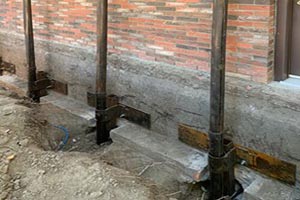
Wall anchors
Wall tiebacks or earth anchors also referred to as wall anchors for basement repair, are structural devices used to stabilize and reinforce retaining walls, basement walls, and other vertical structures that are experiencing outward movement or bowing.
These anchors consist of a steel rod or cable installed horizontally through the wall and anchored to the soil or bedrock beyond.
Wall anchors work by transferring lateral forces from the wall to the surrounding soil or rock, preventing further movement and providing long-term stability.
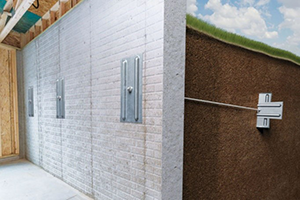
What is Carbon Fiber Foundation Repair?
carbon fiber reinforcement or CFRP (carbon fiber reinforced polymer) also known as Carbon fiber straps, are used to strengthen and stabilize concrete structures that have experienced cracking or deformation.
These straps are made of high-strength carbon fibers embedded in a polymer matrix, providing excellent tensile strength and flexibility.
Carbon fiber straps are typically applied to the surface of concrete walls or slabs using an epoxy adhesive, forming a strong bond that helps distribute structural loads and prevent further movement or cracking.
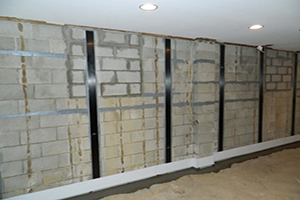
Pressure grouting
slab lifting(Mudjacking) or Pressure grouting, is a technique used to raise and level sunken or uneven concrete slabs by injecting a mixture of cement, soil, and water beneath the slab.
This process involves drilling small holes in the affected concrete and pumping the mud-like mixture beneath the slab to lift it to the desired height.
Mudjacking is commonly used for repairing sidewalks, driveways, and other concrete surfaces, offering a cost-effective and durable solution for addressing minor settlement issues.
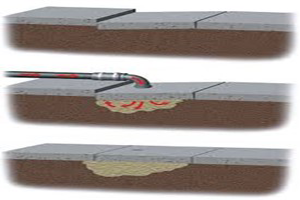
Home Interior Design Ideas: FOYER Design, Small Kitchen Design, AI in Home Design.
Epoxy Crack Injection Repair
Epoxy injection is a method used to repair cracks in concrete foundations and structures by filling them with epoxy resin.
This process involves injecting epoxy directly into the cracks under pressure, which allows it to penetrate deep into the concrete and bond with the surrounding material.
Epoxy injection not only seals the cracks but also restores the structural integrity of the concrete by providing additional reinforcement. This method is effective for repairing both horizontal and vertical cracks and is commonly used in situations where traditional repair methods may not be feasible or cost-effective.
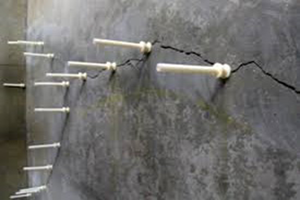
What Is Concrete Leveling?
Concrete leveling, also known as slab leveling or mud pumping, is a technique used to restore the evenness and stability of sunken or uneven concrete surfaces.
This process typically involves drilling small holes in the affected concrete and injecting a specialized grout mixture beneath the slab to raise it to the desired height.
Concrete leveling is commonly used for repairing uneven sidewalks, patios, and garage floors, offering a fast and efficient solution for addressing surface irregularities.

Concrete piers for the basement
Basement repair by concrete piering, also known as underpinning, is a popular method used to stabilize and support foundations that have settled or shifted due to soil movement or other factors.
This technique involves the installation of concrete piers beneath the foundation footings to transfer the structural load to deeper, more stable soil layers. Concrete piering is often preferred for its durability and long-term effectiveness in providing structural support to residential and commercial buildings.
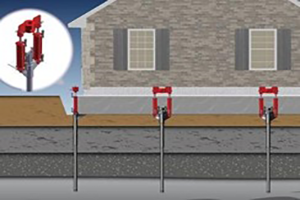
If your home suffers from a settling foundation, fixing the problem sooner rather than later is crucial. The foundation repair method that your home needs depends on several existing conditions, including the symptoms that your house is experiencing, the composition and compaction of the soil beneath your house, how far down stable conditions are located and the type of foundation in need of support.

